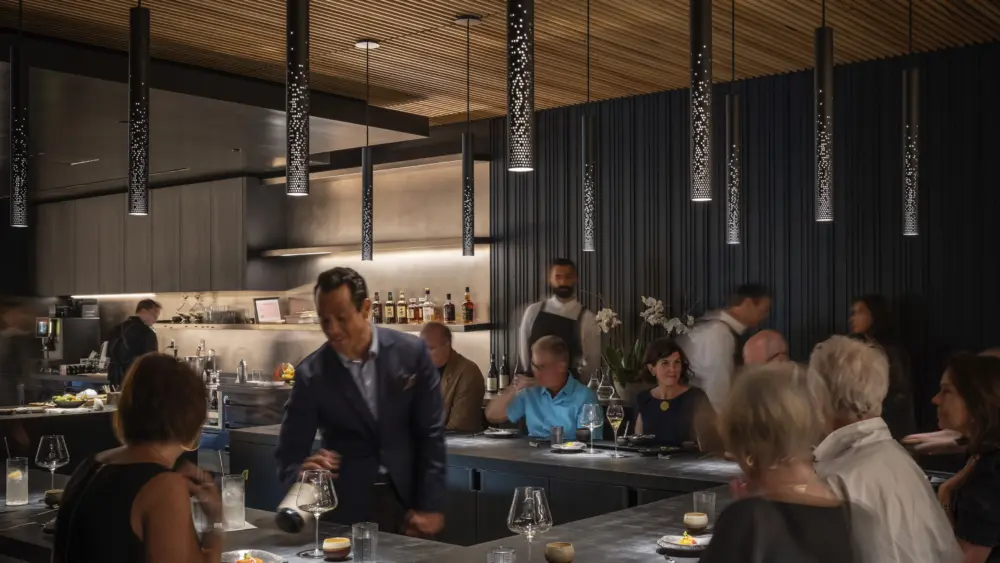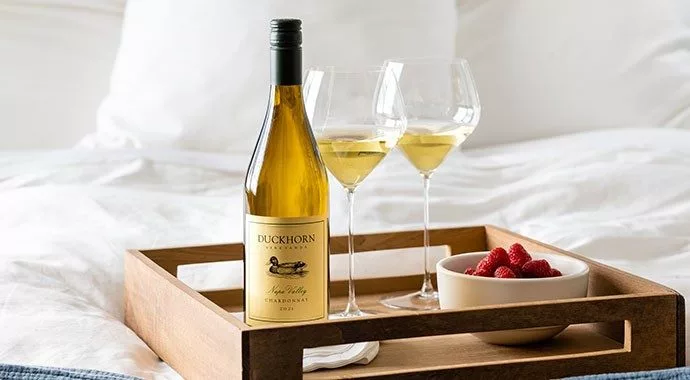So many of us are, on some level, disturbed about the continued disappearance of the traditional family winery in favor of the conglomerate.
 Perhaps you recall George Orwell’s dystopian novel, 1984, which spawned the following neologisms into our language: Big Brother, thought police, newspeak and thought crime. Orwell’s vision of the future and support of democratic socialism was three quarters of a century before its time.
Perhaps you recall George Orwell’s dystopian novel, 1984, which spawned the following neologisms into our language: Big Brother, thought police, newspeak and thought crime. Orwell’s vision of the future and support of democratic socialism was three quarters of a century before its time.What brought this to mind? We believe it was a dream Monty had that, we’re sure, was influenced by an article regarding the recent gobbling up of prestigious family wineries by the behemoths of the industry. In his dream, there were only five wine producing companies left on the planet, with each owning hundreds of small wineries around the world. The five competed against each other in an über economic war with allegiances periodically changing, sort of like the three remaining superstates in 1984—Oceania (socialism), Eurasia (Bolshevism), and Eastasia (fascism with a Buddhist touch). Two were always fighting one, but no average citizen was sure which were allied at any particular time. Maybe all this is a little disconnected…but dreams usually are.
Let’s wake up to the reality of 2016 Northern California Wine Country and start by agreeing that the most recent major acquiring companies (such as Jackson Family, Chateau St. Michelle, Gallo and their ilk) are class organizations run by people of intelligence and style. One can assume their expansionist motives are, in fact, business oriented—and there’s nothing wrong with that. We think we can also find common ground in wishing the latest acquired proprietors (including Far Niente, Patz & Hall and Copain) all the best in making what I’m sure were wonderful deals capping their owners’ hard working, illustrious careers. No one can be critical of that, either.
Nevertheless, all this “win-win” brings an abrupt note of sadness that may be only semi-evident in what people write, but that’s clear as a fined white wine in the voices of those who speak. It’s the passing of a time, of an era, of a way of life. Not so very long ago, the landscapes of Napa and Sonoma counties were dotted with pioneers who frequently sacrificed all they had for a parcel or two of land and a few vines that were often donated from some generous colleagues (sharing was the order of the day).
Yet, they were more than pioneers. They were visionaries who saw what could be, and determined with their heart and soul to make it so. We don’t mean only 60 or 70 years ago in the early careers of Robert Mondavi, Louis Martini, Joseph Heitz, and the like. We include those who made the move in the late 1960s and 1970s, such as Dan Duckhorn, Koerner Rombaur, Dick Grace, Jack and Dolores Cakebread, Al Brounstein, and Donn and Molly Chappellet. All of these icons (we often use the word too much, but some people truly are) were instrumental in building the Napa Valley, and we’d argue that knowing they were establishing a future for their family also played an integral part in their ultimate success.
More to the point, we think deep down, we all know this to be the case. That’s why so many of us are, on some level, disturbed about the continued disappearance of the traditional family winery in favor of the conglomerate. It’s hard for many small producers to compete, so we don’t begrudge any of the good that has come to the players. However, we are a bit sorry for ourselves—and future visitors, who’ll miss so much of what we felt and experienced.
The technologic boom that begat great wealth around the start of this century meant many new families could open new Napa and Sonoma wineries with relative ease. But that’s really not comparable to the early vintners who came without money and advisors, yet miraculously created their wineries from sweat and vision. The new wave of ownership often glides in with cash to spare, purchases the best land or working winery, engages the most expensive viticulturists and winemakers, and then markets their necessarily expensive wines (to pay the bills). Families they sometimes are, to be sure—and they’re to be welcomed—but to a significant degree, they’re much like the established corporate entity coming to the valleys and doing the same.
Maybe this is why 1984 crept into Monty’s subconscious: the age old question of the individual vs. the masses. This change affects those of us with a sense of industry time and space. It’s the loss of history.
Monty and Sara Preiser have been writing about wines and wine trends for 25 years. They publish The Preiser Key, the world’s most comprehensive guide to Napa and Southeast Sonoma, own the boutique Shadowbox Cellars and are frequent lecturers and judges. They can best be reached through Monty’s email, nightlawyer12@aol.com.



